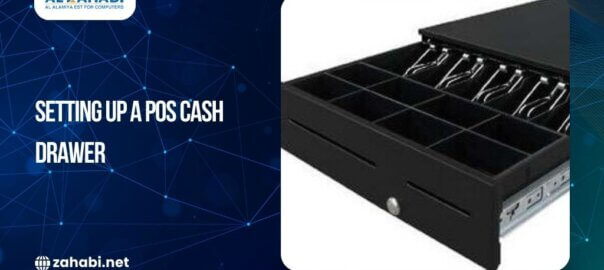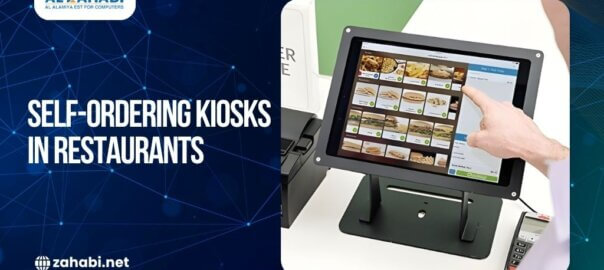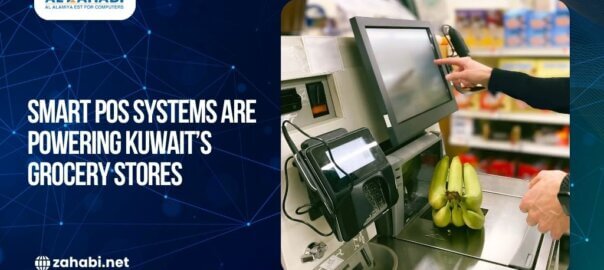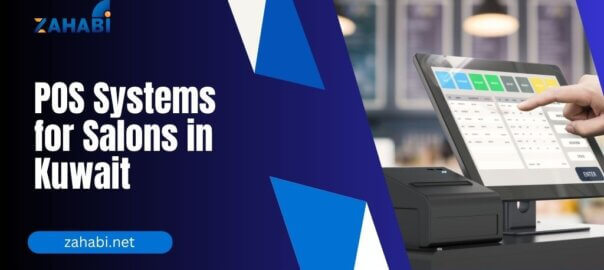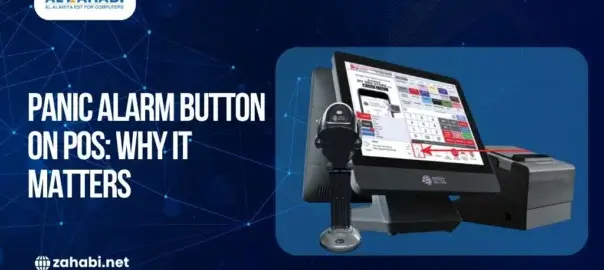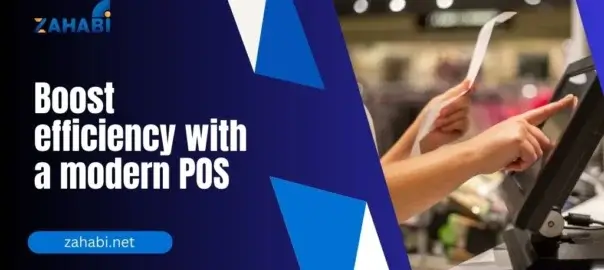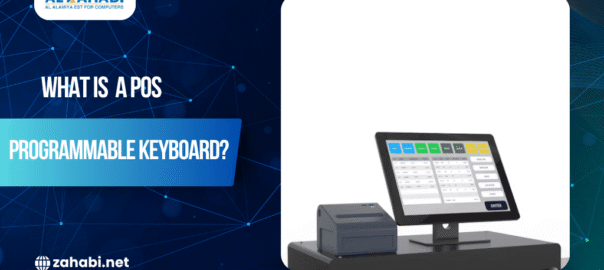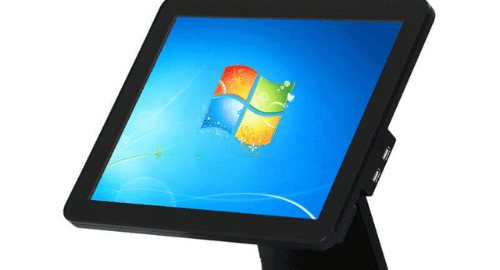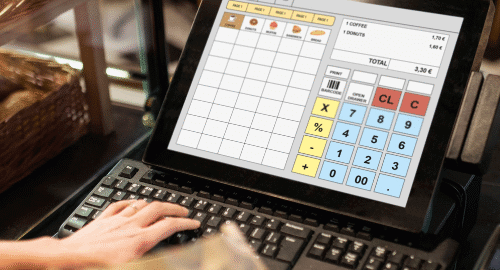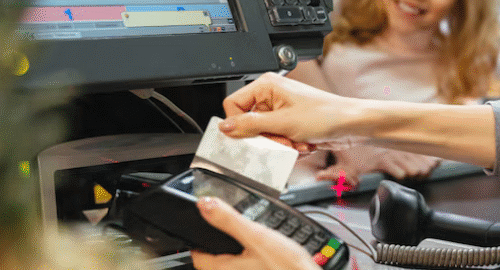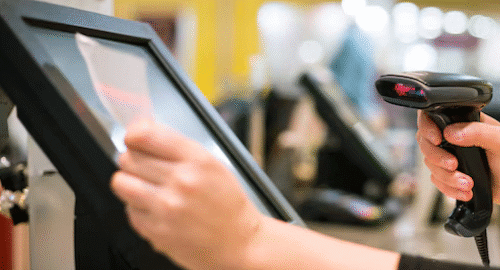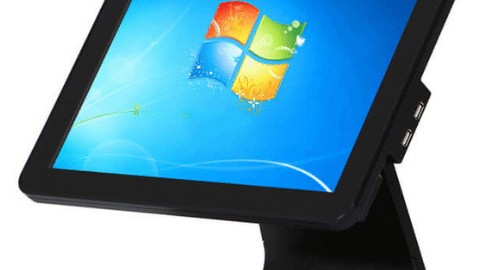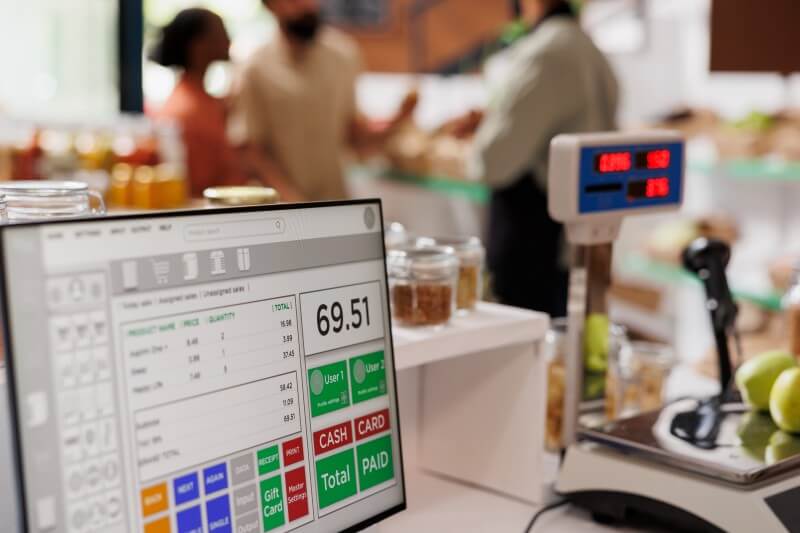
A modern POS system is no longer just a cash register, it is the central hub that powers sales, inventory, payments, and customer data for today’s retail and hospitality businesses. Whether you run a small boutique, a busy restaurant, or a growing multi-store brand, choosing the right type of POS system directly impacts how efficiently you operate and how smoothly your customers check out. In this guide, we’ll break down what a POS system is, its key features, and the main types of POS systems available so you can confidently select the best solution for your business.
What Is a POS System?
Before exploring the different types of POS systems, it is important to understand what a POS actually is. A POS (Point of Sale) system is a combination of software and hardware that centralizes and manages key operations in a retail or service business. It helps merchants process purchases and sales, track inventory, monitor employee performance, and even support marketing campaigns.
Modern POS systems are far more than just cash registers. They act as the operational hub of the business, connecting sales, payments, inventory, and customer data in one place.
Key Elements of a POS System
A complete POS system includes two main components: software and hardware. Both work together to process transactions and manage day-to-day operations.
POS Software
POS software powers the entire system and is required for every type of POS setup. It typically has two sides:
- Front end: The interface where transactions are processed (e.g., checkout screen used by cashiers and staff).
- Back end: The dashboard for owners and managers to access analytics, sales reports, inventory data, and other business insights.
Many POS platforms are now cloud-based, allowing business owners to log in from any internet-connected device for real-time visibility into performance.
POS Hardware
POS hardware is the physical equipment needed to run the software and complete transactions. Common components include:
- A transaction device such as a tablet, smartphone, or computer monitor
- Receipt printer (still widely used, even with the rise of email receipts)
- Barcode scanner for quick product lookup and checkout
- Card reader or payment terminal for credit, debit, and contactless payments
- Reliable internet connection, usually via a router or modem
Together, this hardware and software form the backbone of your POS environment.
Core Features of POS Systems
Different types of POS systems come with varying features depending on business size and industry. Some tools are included in base plans, while others require upgrades or add-ons. Retail POS systems often emphasize inventory and product variant management, while restaurant POS platforms focus on tables, menus, and order workflows.
Below are the most important features to look for in a POS solution.
1. Inventory Management
Both retail stores and restaurants rely on strong inventory control. Most POS systems allow you to:
- Add product details such as price, cost, markup, and available quantity
- Track stock levels in real time as items are sold
- View which products are performing well or moving slowly
Advanced POS inventory features can include:
- Automated purchase orders when stock reaches a set threshold
- Low-stock alerts for timely replenishment
- Integrations with third-party inventory management software
In short, most types of POS systems are tightly connected to inventory management to prevent stockouts and overstocking.
2. Staff Management
Employee management is another critical function for growing businesses. POS systems often let you:
- Create individual employee profiles and login credentials
- Set permission levels based on roles (e.g., cashier, supervisor, manager)
- Track hours worked and sales performance
Some advanced platforms also include built-in scheduling, time tracking, and basic internal communication tools.
3. Payment Processing
Payment processing is at the heart of any POS system. Modern POS platforms typically support:
- Credit and debit cards
- Mobile wallets (e.g., Apple Pay, Google Pay)
- E-checks and contactless payments
- In some cases, alternative or digital currencies
Some POS systems come with integrated payment processing, while others require a separate payment provider. Retailers must ensure their POS supports the payment methods their customers expect.
4. Customer Relationship Management (CRM)
Many POS systems include CRM features to help you build stronger relationships with your customers. Common CRM capabilities include:
- Customer profiles with contact details and purchase history
- Tools for targeted email marketing and promotional campaigns
- Loyalty programs to reward repeat buyers
- Feedback collection or customer satisfaction tools
Some POS platforms integrate with external CRM solutions for deeper marketing and automation.
5. Reporting and Analytics
Reporting is essential for understanding business performance. Nearly all POS systems offer:
- Basic sales reports by day, week, month, or hour
- Employee performance reports
- Inventory and stock-level reports
More advanced and premium systems provide:
- Inventory valuation and reordering suggestions
- Detailed reporting by category, department, or location
- Custom report builders and analytics for forecasting and trend analysis
These insights help you make data-driven decisions and optimize operations.
Types of POS Systems (With Pros and Cons)
Because POS systems control so many aspects of a retailer’s operations, flexibility is crucial. Below are the main types of POS systems available today, along with where they work best, and their advantages and drawbacks.
1. Terminal POS Systems
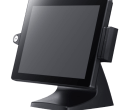
Terminal POS systems are traditional, in-store setups commonly found at retail checkouts and restaurant counters. They typically include:
- A fixed terminal (monitor) for entering data
- A cash drawer
- Barcode scanner
- Customer-facing display with card reader
- Receipt printer
These systems are often configured to run POS software exclusively, making it easier to restrict employee access to other applications or the internet. Restaurant versions can integrate with online ordering and tableside devices, while retail versions may support label printing, advanced inventory tools, and e-commerce integration.
Terminal POS system works best when used at:
- Any size of retail store (grocery, electronics, books, antiques, spas, and salons)
- Fast food restaurants
Pros:
- Easy to restrict employee access to non-POS functions
- Strong integration with traditional POS hardware and software
Cons:
- Limited mobility due to fixed terminals
- Requires staff presence at the counter at all times
2. Mobile POS Systems
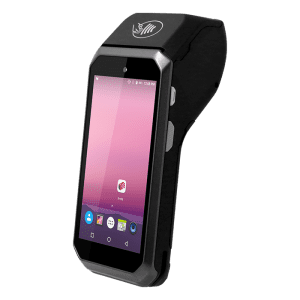
A mobile POS system runs on portable devices, such as tablets or smartphones, and is ideal for businesses that need flexibility. Unlike basic payment apps, full-featured mobile POS systems include more advanced tools like inventory and customer management.
They are especially beneficial for:
- Service providers and food trucks
- Mobile and pop-up businesses
- Retail stores wanting line-busting capabilities on the sales floor
- Restaurants enabling tableside ordering and payment
Because mobile POS systems are usually cloud-based, owners can access data from anywhere and process payments on the go or in a physical location.
Mobile POS systems are typically most effective for:
- Food trucks
- Retailers who must make sales on the go or in a store
- Marketplaces
- Restaurants looking to improve service by providing servers with a handheld system
Pros
- New hardware can be integrated more easily than with a traditional POS
- With cloud-based storage, you may access business data from any location
- Process payments on the go or in a physical location
Cons
- In comparison to a traditional POS, devices are more susceptible to theft and loss
- Some mobile point-of-sale systems are only compatible with iOS
- It costs more to purchase than a standard POS
3. Self-Service Kiosk POS Systems
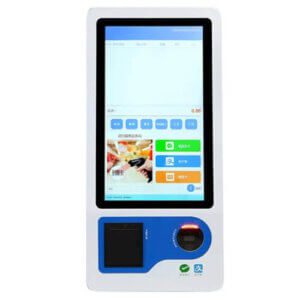
Self-service kiosk POS systems allow customers to place orders and make payments without interacting with a staff member. These are typically mounted as digital touch screens in:
- Quick-service and fast-food restaurants
- Hotels offering self-check-in or room charge options
- Airports and other high-traffic locations where speed matters
The main goal is to increase productivity and reduce labor costs by allowing customers to serve themselves.
Self-service Kiosk POS systems are typically most effective for:
- Restaurants and fast-food chains
- Hotels requiring self-service options
- Busy venues where customers are often in a hurry
Pros
- Puts customers in charge of ensuring that their order is accurate and consistent with their expectations
- Reduces wait times and queues
Cons
- Customization options may be limited by interface design
- Hardware and installation costs can be high
4. Touch-Screen POS Systems
Touch-screen POS systems use intuitive, tap-based interfaces on devices like tablets, smartphones, and PCs. Some solutions come with proprietary touch-screen hardware, while others run on third-party devices.
In restaurants, staff can use touch screens to take orders at the table and verify accuracy instantly. In retail, the familiar interface makes it easy to train new employees quickly, especially younger staff already comfortable with smartphones and tablets.
Touch-screen POS systems work best for the following:
- High-volume retail outlets and restaurants
- Any business in need of an employee training system
Pros
- A streamlined user interface to speed up transactions
- The system’s intuitive design makes learning how it’s used very easy
- More flexible layout and features than many traditional POS systems
Cons
- Compared to other POS system types, touch screens are more expensive
- Subscription plans for touch-screen POS systems can be expensive
- Not every touch-screen POS system is compatible with iOS and Android.
5. Cloud POS Systems
Another POS priority for retailers is moving to a cloud-based system; in fact, about 54%of retail executives plan to use cloud-based POS systems by 2024. Businesses have already started the move. In 2021, the market exceeded $3 billion, and it is anticipated to continue to expand at a CAGR of over 20% through 2028.
A cloud-based POS system is hosted online and doesn’t require any software downloads to use. It is comparable to and often confused with an online POS, even though Online POS can be installed and have an offline mode. It works best for smaller companies who don’t want to blow their budgets by incurring high upfront fees. However, if the internet goes down, there may be a service interruption.
Cloud-based POS systems work best for the following:
- Businesses needing global access to inventory, sales, and reports
- Companies aiming to reduce hardware and IT costs
- Retailers seeking a flexible and scalable setup
Pros
- Access from any compatible internet-connected device
- Simple and automatic software updates
- No charges for software installation
Cons
- Subscription fees may be expensive
- It requires a reliable internet connection
6. Open-source POS Systems
Open-source POS systems are usually free or low-cost investments. The inexpensive price makes them appealing to small and big enterprises with technical and coding expertise. You can customize the functionality of your POS software interface to your exact specifications when using open-source POS solutions.
An open-source POS may appear cost-effective at first look, but its operation takes resources that can mount up. Over time, it also requires upgrades and maintenance. This will require software engineers, and since they usually charge high fees, open-source POS can be expensive. Therefore, open-source POS systems are best suited for big corporations or tech-savvy small firms.
Open-source POS systems work best for the following:
- Large companies with in-house development teams
- Tech-savvy small businesses that need deeply customized solutions
Pros
- Open-source point-of-sale systems are considerably less expensive and sometimes even free.
- Easy to modify to specific business needs
Cons
- Requires ongoing technical expertise and maintenance
- Payment processing and support may not be integrated
- No guaranteed customer support from a vendor
7. Multichannel POS Systems
Multichannel POS systems are designed for businesses selling across multiple channels, physical stores, online shops, and social media. They centralize all sales, synchronize inventory across locations, and ensure consistent product data.
This is especially important as online and offline commerce become increasingly connected. Accurate, unified information helps prevent stockouts and provides a seamless customer experience.
Multichannel POS systems work best for:
- Brick-and-mortar retailers with e-commerce stores
- Mobile vendors expanding through online marketplaces or social media
Pros
- All of your sales channel’s data is accessible and managed in one place
- Provides convenience for customers by increasing their shopping options
Cons
- Pricing differences between channels can create complexity
- Small businesses and start-ups may find multichannel management challenging at first
How to Choose the Right POS System
Each business has unique needs that must be taken into account. However, there are some features to consider when selecting the type of POS system you are looking to implement.
Cloud-based Software
Cloud-based POS software lets you access your system from anywhere with an internet connection and receive regular updates directly from your POS supplier. When evaluating a solution, ask whether:
- Automatic software updates are included
- New features and security patches are rolled out regularly
- There are additional fees for upgrades
Integrated System
An integrated POS system brings all components inventory, payments, CRM, and reporting into one platform. Benefits include:
- Fewer compatibility issues between separate tools
- Simpler vendor management and billing
- More efficient workflows and unified customer support
This can save both time and money while streamlining operations.
User-friendly
A POS system should be intuitive for both managers and front-line staff. Look for:
- Clear, well-organized screens
- Minimal training time for new employees
- Simple workflows for common tasks like checkout, returns, and exchanges
The easier the system is to use, the fewer errors and delays your team will experience.
Wrapping Up
Choosing the right POS system is a strategic decision for any retail or hospitality business that wants to grow and stay competitive. With so many types of POS systems available terminal, mobile, kiosk, touch-screen, cloud-based, open-source, and multichannel you may ultimately use two or more to meet all your needs.
By understanding the core features, pros, and cons of each option, you can select a POS system that supports efficient operations, better customer experiences, and long-term business success.

